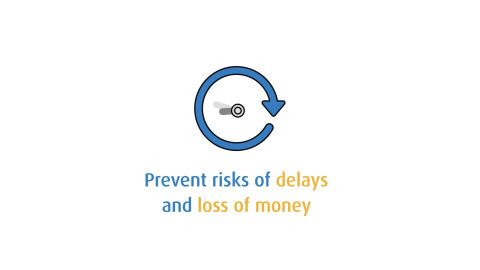Gratuity Calculator
Gratuity is a cash benefit provided by an employer to an employee for the services rendered to the organisation. The employee is paid at retirement, resignation, layoff, or termination, provided the employee has completed five years of continuous services before leaving the organisation. In some instances, such as the individual's death, continuous 5-year service is relaxed.
Disclaimer
The gratuity amount calculated is an estimate only and is computed based on the information provided by you. Therefore, the actual amount may be slightly different.
What is a Gratuity Calculator?
You can use the Gratuity Calculator to estimate the amount of money you will receive if you plan to leave a job after a minimum of five years of service or to look forward to your retirement. There are various rules for gratuity calculation that you should keep in mind beforehand. We will look at multiple regulations that will help you estimate your gratuity amount to plan your investments better upon receiving the money.
Gratuity calculation formula
The gratuity rules and calculations are prescribed by the Payment of Gratuity Act, 1972.
There are mainly two categories, as given below
- Category 1: Employees covered under the Act
- Category 2: Employees not covered under the Act
These two categories cover both private as well as government employees. For government employees, more heads specific to their pay structure is accounted, such as Dearness Allowance. In addition, all organisations with at least ten employees working on a single day for the preceding 12 months must pay gratuity.
Category 1: Employees covered under the Act
Using the two critical parameters – number of years of service and last salary drawn, you can calculate the gratuity as follows:
Gratuity = Last drawn salary x (15/26*) x Number of years of service
*The number of working days per month is taken as 26 days.
**Gratuity calculation is accounted at the rate of 15 days wages.
The last drawn salary should be calculated to account for the following components:
- Basic
- Dearness Allowance – for government employees
- The commission received on sales
Example: If you had been drawing Rs. 80,000 as your last basic salary with 10 years four months of employment tenor, then the gratuity amount you will receive as per the formula is:
Gratuity = Rs. 80,000 x (15/26) x 10 = Rs. 4.62 lakh
The four months is below 5, so it is rounded off to 10. Months more than five are rounded off to the following year.
Category 2: Employees not covered under the Act
You can be paid a gratuity even if the organisation is not covered under the Act. If that is the case, the number of working days in a month changes to 30 days instead of 26 days.
Gratuity = Last drawn salary x (15/30) x Number of years of service
In the above example, if your organisation is not covered under the Act, then the calculation will be as follows:
Gratuity = Rs. 80,000 x (15/30) x 10 = Rs. 4.00 lakh
For employees covered under the Act, the benefit of a lower denomination is given. Hence, working days in a month are taken as 26 days instead of 30 days.
Where should you invest your gratuity funds?
Gratuity funds can fetch you higher returns if invested wisely. Do not let the gratuity money stay idle in your savings account, where it will only give negative returns, accounting for inflation. You can easily earn good returns by investing such lumpsum into fixed deposits, a lucrative, safe, and highly stable investment option.








